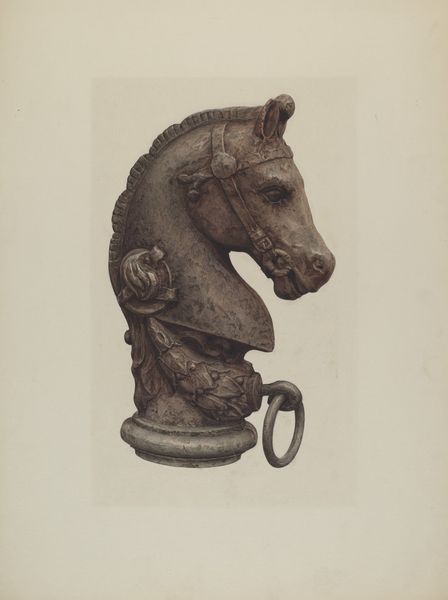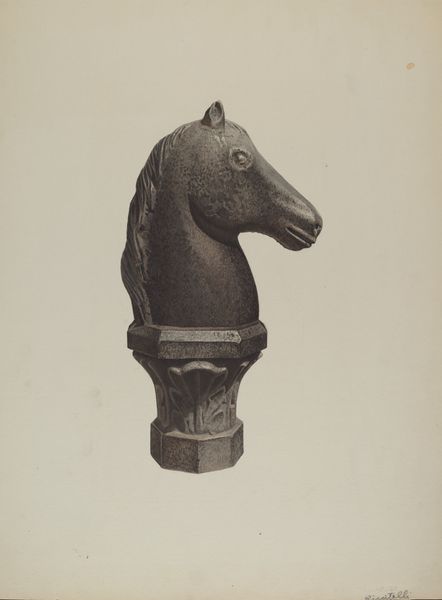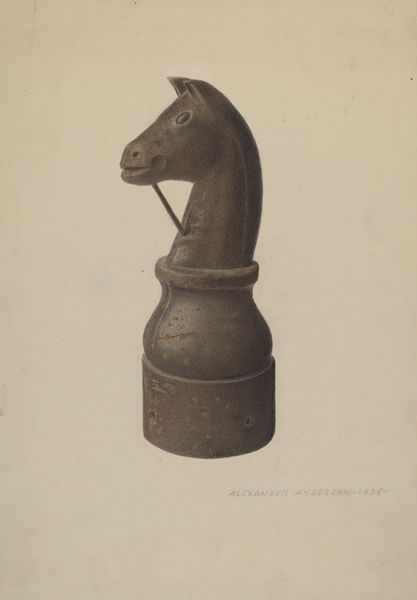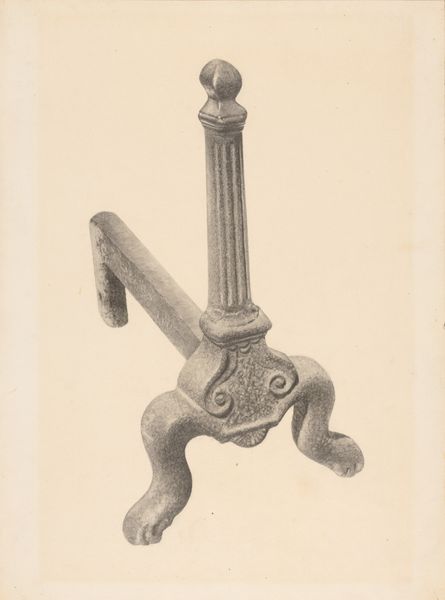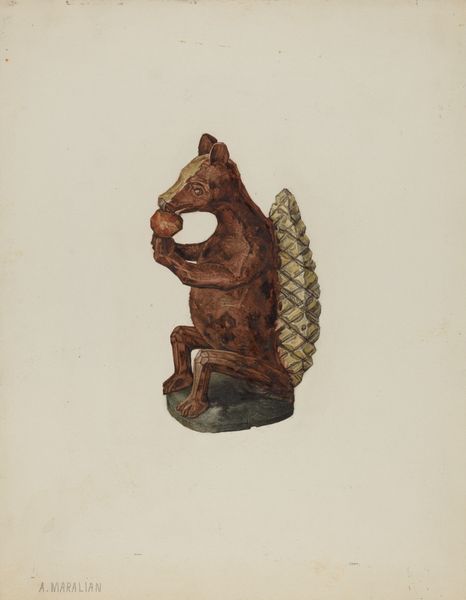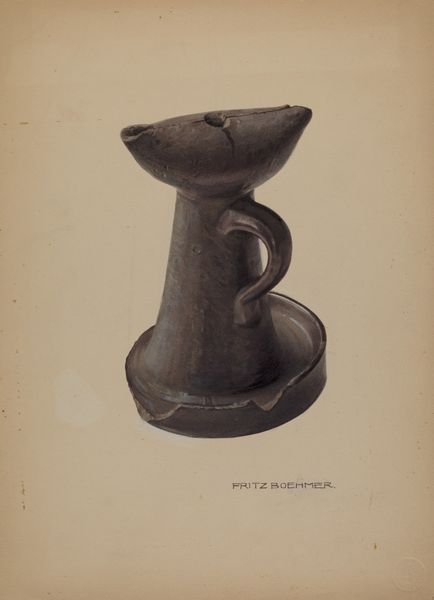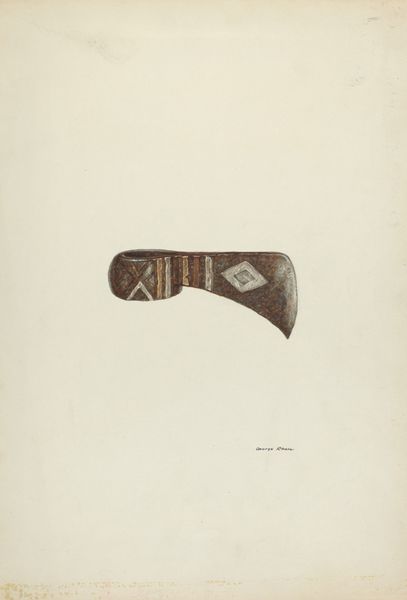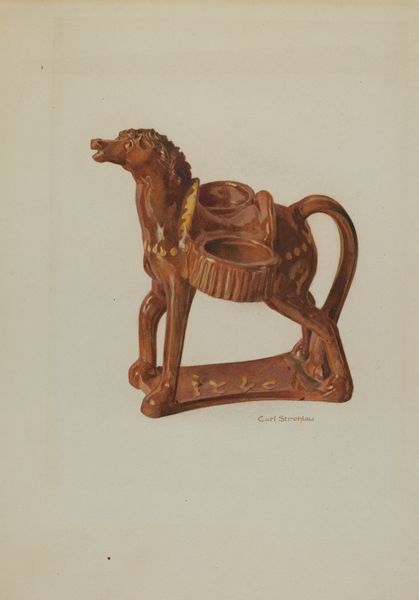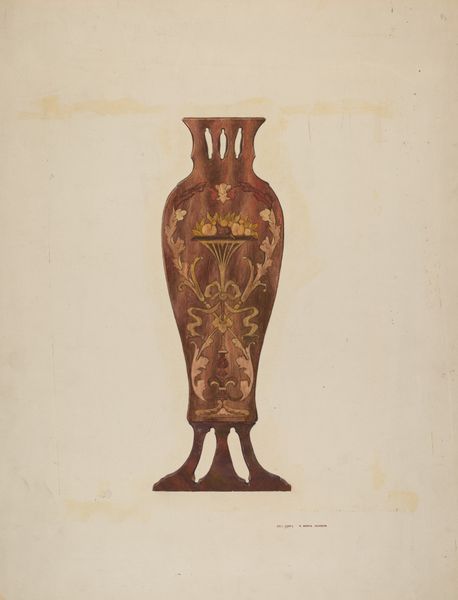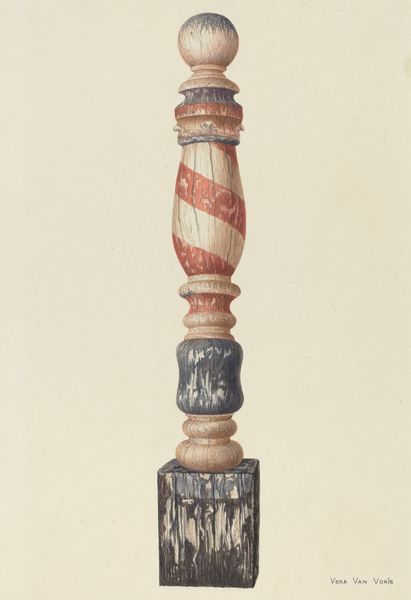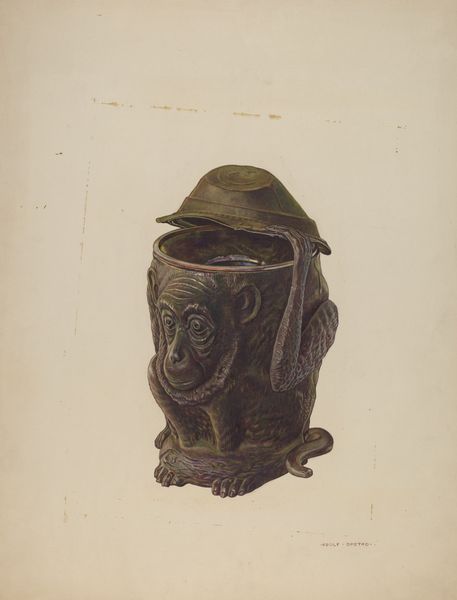
drawing
#
pencil drawn
#
drawing
#
amateur sketch
#
toned paper
#
light pencil work
#
pencil sketch
#
charcoal drawing
#
pencil drawing
#
underpainting
#
watercolour illustration
#
watercolor
Dimensions: overall: 50.9 x 40.5 cm (20 1/16 x 15 15/16 in.)
Copyright: National Gallery of Art: CC0 1.0
Curator: A striking piece here. This is "Hitching Post," a drawing from around 1940 by Gerard Barnett. It appears to be rendered with watercolor and pencil on toned paper. Editor: My first impression is that of something unearthed, like an artifact—something simultaneously familiar and faintly mournful. Curator: It certainly speaks to a bygone era. The image evokes a particular kind of rural Americana, when horses were central to daily life and commerce. We should think about how the mythology of the American West shaped identity and labor practices. Who benefitted, who suffered? Editor: Precisely. The horse head, classically stylized almost like a Roman bust, symbolizes strength and freedom but its very posture—head bowed, tethered by a ring—conveys restraint. Think of the psychological weight of that imposed stillness. Curator: And the very notion of being "hitched," whether to a post or something more figurative... It’s suggestive of imposed social structures. In what ways were marginalized groups in that period tied to systems that denied them full agency? Editor: The color choices also speak volumes, don’t you think? Those earthy browns and muted tones create an aura of solemnity and resilience. Brown is very earthly: what emotions arise when you see the browns in the illustration? The material of the artwork makes us also consider time. Curator: Absolutely. The texture contributes to the sense of layered history. I appreciate the way it subtly critiques the dominant narrative, acknowledging untold histories. And let’s note, too, that a hitching post itself marks territory, suggesting property, control, and perhaps even dispossession. Editor: It’s remarkable how this artist manages to evoke such deep cultural echoes through a seemingly simple depiction. There's such potency in the iconic image of the horse's head. It brings forward all these cultural symbols of nobility and labor. Curator: By focusing on the apparatus of restraint, it reminds us to examine who benefits and who is burdened by these "noble" structures. I wonder how it comments on contemporary systems of oppression? Editor: Thinking of the history in the artwork it reminds us that these symbol's powers lie not just in its design but also in how it resonates—or sometimes clashes—with collective understanding across different contexts. A powerful lesson there.
Comments
No comments
Be the first to comment and join the conversation on the ultimate creative platform.
